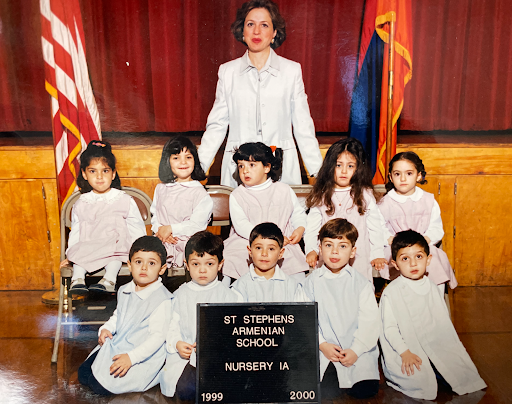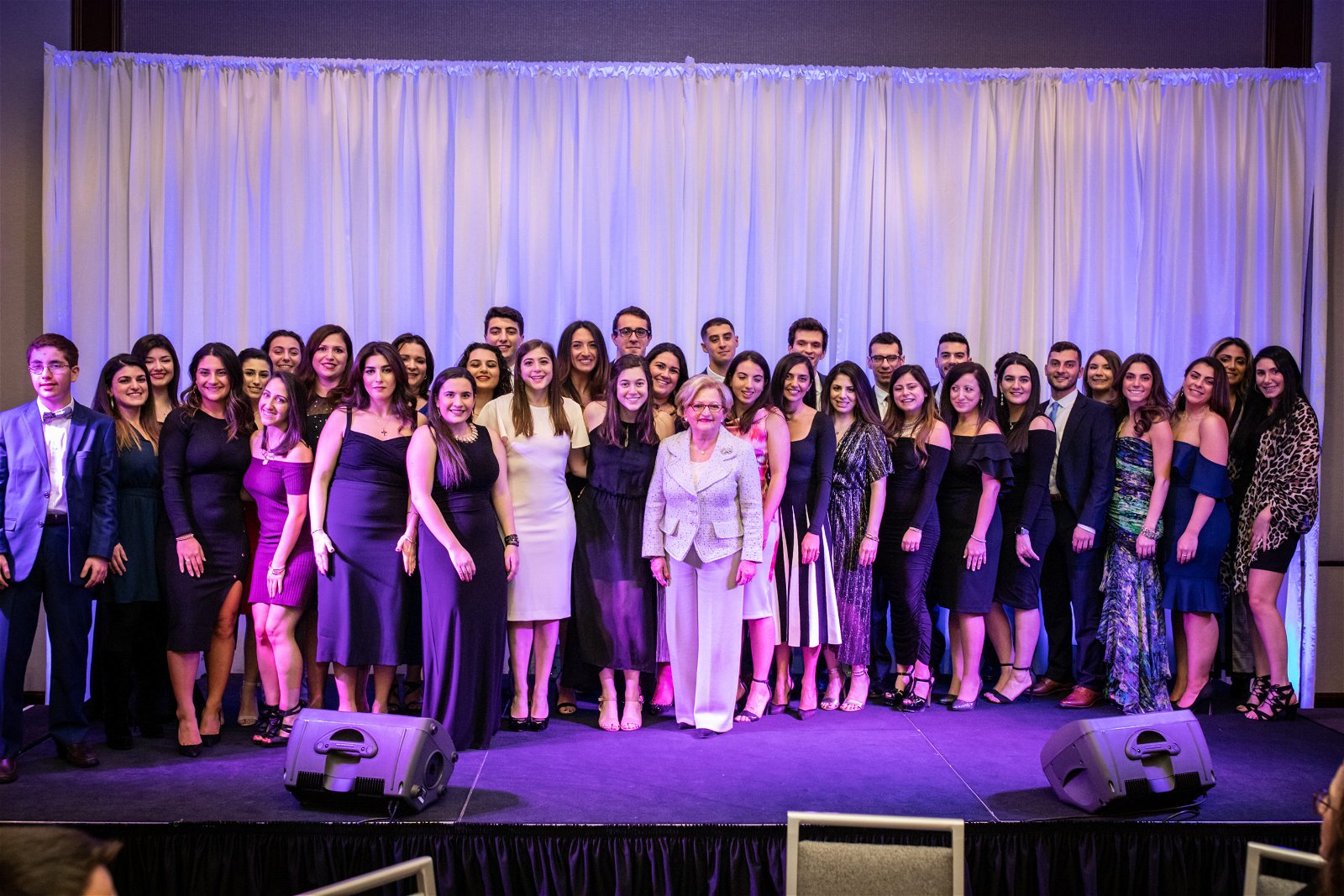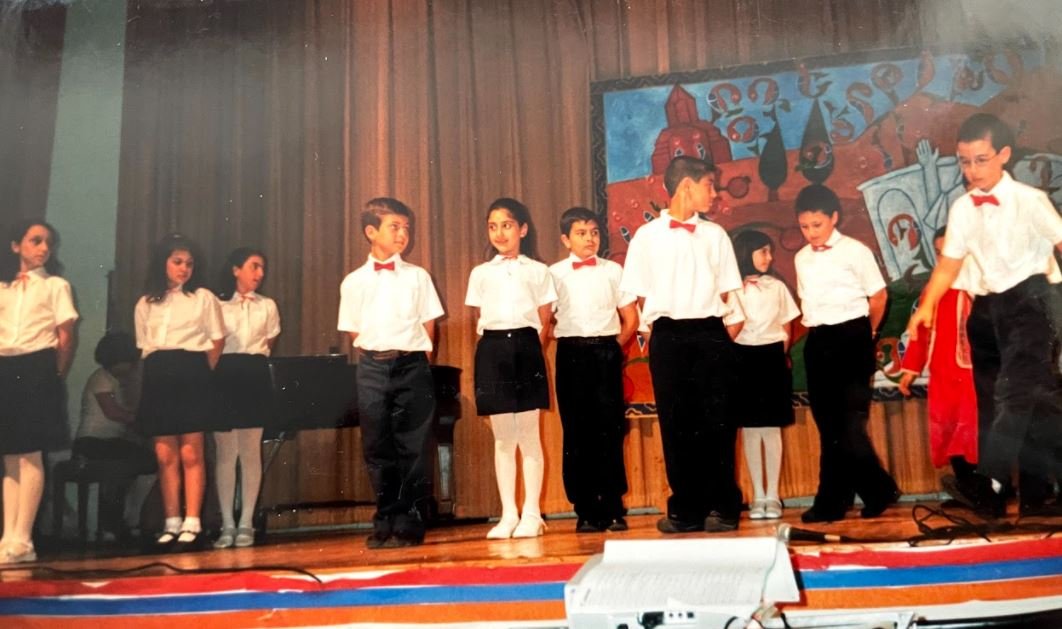
What if you were able to give your children something better than the best? If you had the opportunity to set them up and guarantee for them lifelong friends and a unique education that would help them stand out from their peers for the rest of their lives? The chance to give them memories and unparalleled exposure to their culture? In a world where opportunities are said to be endless and options seem to be unlimited, we are lucky enough to have Armenian schools. So let’s choose them.
We can only hope that every Armenian school around the world has their version of our very own St. Stephen’s Armenian Elementary School (SSAES) unique teachers. These leaders in early childhood education not only inspire us, but also instill in us a lasting sense of pride. The late Digin Anahid taught us the foundation of our language and the importance of speaking, reading and writing in Armenian. Digin Ardemis built on this by delving deep into our story, connecting us to our roots and helping us understand the duty we have as Armenians. We ultimately graduate with a sincere appreciation of being who we are, equipped with valuable lessons that we carry throughout our lives. As eager children who were always ready to play and spend time with one another, this was a lesson that consistently served as a reminder to us: «Նախ դաս, ապա խաղ։»—“Learn first, then play.” This is something that I live by to this day, thanks to Digin Ardemis.
«Նախ դաս, ապա խաղ։»—“Learn first, then play.”
For 32 years, SSAES principal Houry Boyamian has been creating the most professional and disciplined, yet comfortable and home-like environment for the Greater Boston Armenian community. “If we have a clear vision and work fiercely for it, we can achieve a lot,” she tells me. “The difficulties are many, and there is a lot of work to be done, but it is doable.” Like any other institution, SSAES is always working toward improvement by creating rigorous curricula to meet the Common Core Standards and challenging students to help them stand out in their continued education.

I recall the 35th anniversary celebration of SSAES back in November of 2019 when SSAES alumni were called onto the stage. I picked out my mom in the crowd. She was one of dozens of proud parents trying to take a picture among hundreds of other poorly aimed iPhones. It was a déjà vu sort of moment as I thought back to my childhood and looking for my parents during our many on-stage recitals (hantess). I remember resisting every urge to wave to them because I knew I’d distract my classmates and compromise our performance. In that moment, all I felt was gratitude. I was thankful that my parents had done everything they did to give me this opportunity…that moment. Thankful that I had teachers who inspired me to pursue work in the field of education and taught me compassion and patience. Thankful that I have the ability to speak, read and write Armenian. Thankful for this pride, this heritage… this really special group of people.

And while I felt thankful, I also felt fear.
I fear the possibility that one day, we may not have schools to celebrate. I fear the possibility that our future children will not have an Armenian school to choose because we did not choose it for them. I fear that our communities will not survive without our Armenian schools. Ultimately, I fear we will lose ourselves to assimilation. And this is something that we cannot accept. Let’s take a moment to think about our communities without an Armenian school. This means no access to Armenian curriculum, putting an already endangered language at risk of extinction and leaving generations of Armenian children without exposure to one of their most prized cultural possessions. I fear that the existential crisis that we are currently facing will only worsen if we lose sight of the importance of raising Armenian children in these formal institutions that are equipped to teach our language. I fear that if we do not make this more of a priority, our doors will close. And the day those doors close… is the day that our story ends.
I can sit here for hours on end and explain to you why we should choose Armenian schools, but it will not take away from the inevitability of limiting factors, like financial burdens or daily commutes to and from school. Thankfully, many, if not all, of our schools have ways to ease finances. SSAES, for example, has launched a fundraising campaign for the Need-Based Financial Aid Program. The goal is to eliminate financial impediments for Armenian families. I feel very lucky and I [now] appreciate every ride to and from school, every tuition bill my parents worked for and everything in between, that made it possible for me to attend SSAES for eight years. I’ll admit, I didn’t understand just how important it was at the time. Not a day goes by that I don’t reminisce or think of my time there. If I could, I would go back and do it all again in a heartbeat.
An Armenian school is the pulse of an Armenian community. It brings us together and keeps us connected because it is rooted in our historic, melodic and beautiful language—the language that we have fought for and preserved for centuries. The moment we stop speaking, reading, writing, singing, dancing and praying, is the very moment we give up. You and I know better than anyone, this is not who we are. We do not give up. We have a responsibility to our youth to provide the best possible foundation for their understanding of who they are, their history, their roots. We are the authors of our own future. We are lucky enough to have Armenian schools. So let’s choose them.


Excellent article. A must read. Bravo Ani.
This was so needed. Especially now. Thank you, Ani!
Thank you for this heartfelt and informed article. I hope it can be shared widely within Armenian-American communities across the country. I’m a graduate of an Armenian school in the U.S. and my son is a graduate as well. Like you, we feel grateful and empowered by the lifelong gift of language, history, identity and community we wouldn’t have gotten anywhere else. My mother, now 90 years old, was born in the U.S. at a time when there wasn’t one Armenian school here. In the 1950’s, with no Armenian schools yet established in the U.S., the Armenian Relief Society sent her to an Armenian school in Beirut, Lebanon for a year of immersion in Armenian language and history courses. We’ve come a long way as an Armenian-American community since then, due in good part to our schools. With their strong sense of identity and their knowledge of the Armenian language, history, and traditions, our Armenian school graduates are the source of our national preservation in the diaspora and are the well-positioned to contribute readily and substantially to the progress of our homeland.